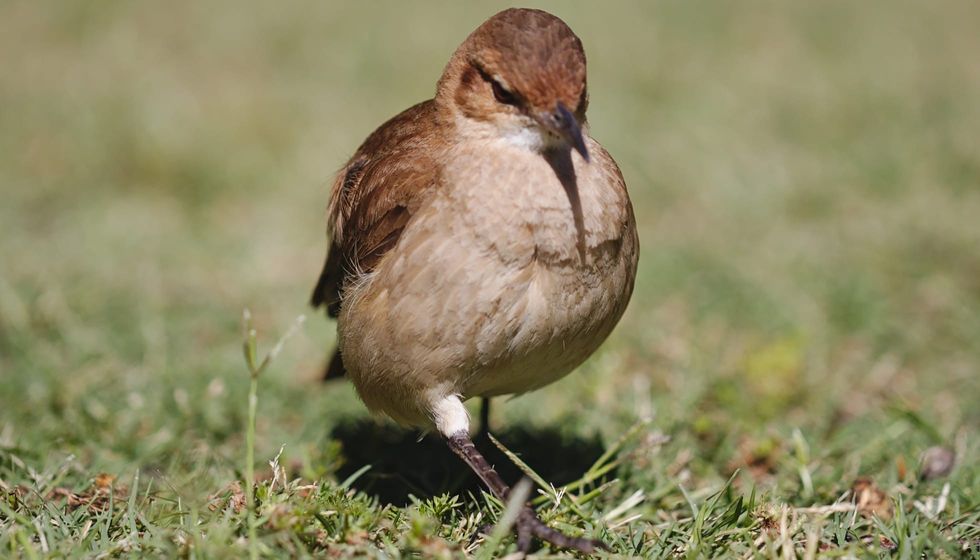The cryptic treehunter (Cichlocolaptes mazarbarnetti) is a bird, native to Brazil but does not exist anymore. However, some scientist still believes that it has not vanished completely from Earth.
C. mazarbarnetti earned its common name because of the fact that it was really hard to find this creature in its habitat. Although, in Portuguese, it is known as the gritador do nordeste, meaning the screamer of the northeast. C. mazarbarnetti prefers to live in the humid forest in only two locations in Brazil.
Due to previously being Endangered and now believed to be an Extinct creature, there is not much information available about it. Scientists believe that they may have ceased to exist and spotting them in the wild is very rare. They were known to live in woodlands grassland, tropical forests, and even humid forests.
Birds are one of the most interesting animals to learn about. To know more about other birds, you can also check out tanager and hermit thrush.
Cryptic Treehunter Interesting Facts
What type of animal is a cryptic treehunter?
It is bird species in the family Furnariidae that vanished from earth in recent years.
What class of animal does a cryptic treehunter belong to?
The bird species belong to the class Aves in phylum Chordata.
How many cryptic treehunters are there in the world?
There is not a single bird of this species that is present on the Earth.
Where does a cryptic treehunter live?
It is one of the rarest birds in the world that found in only two locations in northeast Brazil, a small locality at Murici in the Alagoas state and Frei Caneca in the Pernambuco state.
What is a cryptic treehunter's habitat?
This bird is usually found in only two states of Brazil, Pernambuco, and Alagoas. It prefers the humid forest in these regions.
According to the report of Global Forest Watch, the latter region lost more than 62,000 hectares of tree cover, whereas the former area lost over 146,000 hectares between 2001 and 2012. Both Murici and Frei Caneca, where the bird has been recorded, are included in the Atlantic Forest, a biodiversity hotspot in Brazil.
It lies north of the river São Francisco. Other important regions include Paraíba and Rio Grande do Norte.
In this hotspot, there lie around 20,000 plant species, reptiles 700 bird species, over 260 mammals species, 200 types of reptiles, and nearly 280 kinds of amphibians. Most species are native to the region and found nowhere else on the Earth.
However, many more species are yet to be discovered in this area. This Atlantic forest was once huge that extend 150 million hectares.
Although, due to the deforestation of sugarcane plantations and cattle rearing, the forest cover remains only eight percent of its original area. According to research published in Biological Conservation, previously, the forests were continuous which now sliced into 245,000 remote fragments with slightly real forest cover.
The majority of these fragments (83 %) are diminutive with less than 50 hectares in area. Foreseeably, the conservation status of many species in the area is critical.
For example, more than 70% of the 199 local species of bird in the region are either threatened or endangered. One of the threatened birds in this area is the Pernambuco pygmy owl.
Who do cryptic treehunters live with?
Whether the bird lives in a group or alone is unknown.
How long does a cryptic treehunter live?
The lifespan of this bird is unclear.
How do they reproduce?
The cryptic treehunter, Cichlocolaptes mazarbarnetti, is a species endemic to Brazil that was found when it was already Endangered and very low in numbers. Therefore, the reproduction of these birds is unknown as there is no record available.
What is their conservation status?
As a part of the BirdLife International Brazil Programme, in depth fieldwork was done which estimated that a highest of five to 10 pairs may have lived in the complete reserve in the year 2004.
Researchers estimated to be not more than two pairs existed at Frei Caneca. They demanded to placed the Cichlocolaptes mazarbarnetti in the category of Critically Endangered species at the national and global level.
Between 2007 and 2007, the researchers noticed bothering levels of diminutive to medium scale deforestation that affects the population of the bird.
The logged area emerged out to be ideal habitat for C. mazarbarnetti. Dante Buzzetti, a colleague of Juan Mazar Barnett said it might be early to announce the extinction of both birds (Cichlocolaptes and Alagoas) based on the absence of their recent records.
Dante Buzzetti further added that it is crucial to do focused searches, particularly by using data about certain habitats and vocalizations.
If they are not vocalizing it is basically impossible to find the C. mazarbarnetti inside the vegetation of the forest that is 65 ft (20 m) high, according to Dante. There is still hope to locate the Murici if the forest which is the natural habitat has not been removed, Buzzetti added.
Cichlocolaptes mazarbarnetti was last seen in its natural habitat in the year 2007.
In 2018, the IUCN (International Union for Conservation of Nature) declared the species as Critically Endangered. In 2018, a study based on the bird extinction pattern and absence of any sightings since 2007 proposed that it got vanished quickly.
After this, the IUCN classified the Cichlocolaptes Mazar Barnett as a vanished bird in 2019.
Cryptic Treehunter Fun Facts
What do cryptic treehunters look like?
The cryptic treehunter, Cichlocolaptes mazarbarnetti, is around 8.6 in (22 cm) long with a tail nearly one third of the length. Its weight is approximately 1.6 oz (48 g).
This Brazilian bird forehead is jet black, and the eyes too. The back of the body and neck, and the rump are cinnamon brown. However, the color of the tail is dull orange, with the middle rectrices darker dorsally.
It is much larger in size with a heavy body mass, longer bill, and darker forehead than the Alagoas species. There is a lack of buffy periocular feathers in C. mazarbarnetti.

*Please note the main image and this image are of a rufous hornero (Furnarius rufus) that belongs to the same family as the cryptic treehunter. If you have an image of a cryptic treehunter please let us know at hello@kidadl.com.
How cute are they?
With different shades of brown, the Cichlocolaptes mazarbarnetti species are adorable to watch.
How do they communicate?
There is no information available regarding the communication in Cichlocolaptes mazarbarnetti species.
How big is a cryptic treehunter?
The height of a Cichlocolaptes mazarbarnetti is 0.7 ft (22 cm), which is 10 times bigger than a coastal miner.
How fast can a cryptic treehunter fly?
The flying speed is Cichlocolaptes mazarbarnetti is unknown.
How much does a cryptic treehunter weigh?
The weight of a C. mazarbarnetti is 1.6 oz (48 g).
What are their male and female names of the species?
There is no male and female name of C. mazarbarnetti, separately.
What would you call a baby cryptic treehunter?
Like other Aves species, the baby C. mazarbarnetti is generally known as a chick, young, offspring, or nestling.
What do they eat?
The eating habits of C.mazarbarnetti are unclear. But it is believed that they fed on arthropods and that they are carnivores.
Are they dangerous?
They went absent from the earth. Therefore, there is no danger associated with these Aves.
Would they make a good pet?
The Cichlocolaptes mazarbarnetti species have gone extinct. Hence, humans cannot keep them as pets.
Did you know...
Cichlocolaptes mazarbarnetti was discovered in 2002 by two scientists, Juan Mazar Barnett and Dante Buzzetti.
Naming the cryptic treehunter
Researchers found it difficult to spot Cichlocolaptes mazarbarnetti in the forest. Therefore gave the bird its name.
Why did the cryptic treehunter go extinct?
The cryptic treehunter extinction is probably caused by endemic habitat loss along with climatic change.
Here at Kidadl, we have carefully created lots of interesting family friendly animal facts for everyone to discover! For more relatable content, check out these ruby throated hummingbird facts and yellow breasted chat facts pages.
You can even occupy yourself at home by coloring in one of our free printable mockingbird coloring pages.









